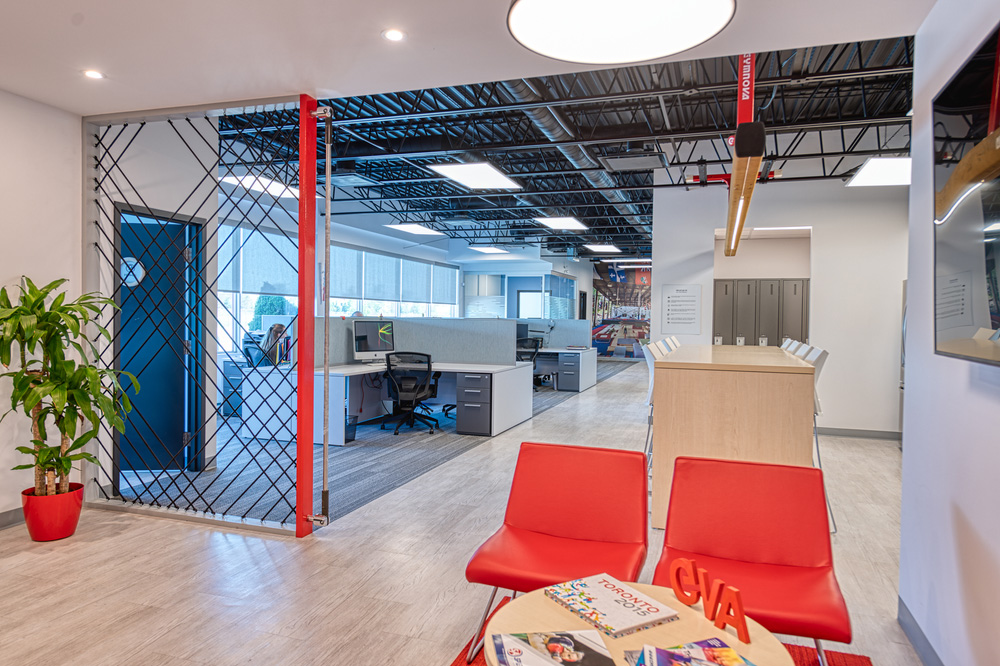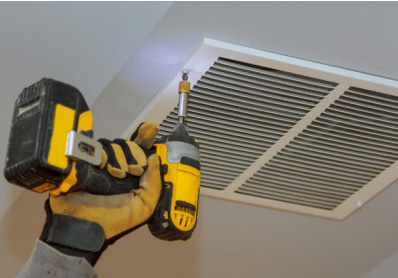In an effort to curb the pandemic, businesses have to adapt before letting employees return to the office and there will inevitably be a long-term impact on the philosophy of office space arrangements.
Indeed, the pandemic has pushed the emergence of new technological processes, as well as diversified working methods (for example, remote work and internal reorganizing). The work arrangements, being at the service of the work teams, will have to be redesigned to properly respond to new needs while optimizing the profitability of the work area surfaces.

The health and well-being of employees will therefore be at the heart of the layout of tomorrow’s offices and their frequentation. Indeed, the human will be put forward in this new normal and managers will have to take into consideration the psychological and emotional condition of their employees.
Here are the points that will guide the changes to be made to obtain efficient work environments according to the new post-Covid-19 work habits.
Shared workstations to ensure profitability
Remote work is now well established and will probably never go away (for more information, you can read this blog article on remote work) which is a good thing. Indeed, working from home offers many advantages, the main one of which is work-life fulfillment and balance. In addition, employees have taken a liking to it and employers have gained confidence. However, to ensure good collaboration, team cohesion and optimal engagement within the company, returning to the office is essential for individuals, teams and organizations.
It is recognized that working in an office with collaborators provides:
• Humanity and innovation
• Goals and energy
• Health and wellness (including variety, movement, thinking, limits, etc.)
• Talent and empowerment
• Empathy and strengthening of culture
Work will therefore take different forms, depending on the reality of each worker: remote work, alternate work (2 or 3 days at home and the rest at the office), flexible hours, etc.
Because of this new reality, many companies will be tempted to reduce their office space by focusing on collaboration spaces, shared workstations as well as on the efficiency and productivity of their employees working from home. Indeed, it is necessary to make better use of space and encourage teamwork with open spaces and collaborative environments.
An assigned seat thus becomes an unnecessary expense for the company. For example, a 120 square foot office that is not used full time is an expense of $15,000 too much for a 5-year lease at $25/ft2. Several companies could save a great deal by providing shared or non-designated positions.
Focus on collaborative spaces
Once an alternation scheduled is set between working at the office and working from home, the days that employees will spend at the office will be mainly for collaborative work and meetings with colleagues, collaborators, clients, etc.
Greater emphasis should therefore be placed on collaborative spaces such as lounges, meeting rooms and the cafeteria, which should not be overlooked, to allow for planned meetings and also to provoke impromptu meetings between colleagues.
Invest in videoconferencing equipment
Several employees will continue working from home since that’s what’s more efficient in terms of time (no travel) and also better for the environment (fewer cars on the roads). They will therefore have to continue to collaborate and stay in contact with the company via videoconference.
Consequently, one or more rooms must be well adapted to these new technologies in terms of speakers, microphones, camera, screens, specific lighting, acoustics and furniture (adapted according to the camera visual field).
Check out Lib’s blog post. to learn more about three of the most popular videoconferencing software: https://www.lib.space/en/communication-tools-to-improve-remote-work/
Maintain a reasonable distance
Even when the pandemic is behind us, the era of work tables where employees piled up 4-5 feet apart without benchmarks will no longer be in the works. A certain distance will remain rooted in our habits.
Who knows, maybe we will even see a return of cubicles with higher separators? Perhaps, but the creativity of a designer will be required to make them attractive and not to hamper connectivity between colleagues.
Obviously, employee safety and well-being will have to be respected. Thus, the standards of social distancing applicable to the office will result in a lower density of employees per square foot (150pc per employee and more to be expected), as well as larger and more common spaces.
More rigorous building maintenance
Visible housekeeping will take on new importance. In fact, employers in collaboration with building owners will have to implement improved cleaning protocols in offices. During the day, clean frequently and properly disinfect the surfaces of common areas. During the night, the whole office space will have to be cleaned and disinfected by the maintenance team.
On top of that, they must plan an initial thorough cleaning before the employees return to the office.
To find out more about all of the office space cleaning services, see this article: https://www.lib.space/en/redefining-office-space-cleaning/

Clean indoor air
Air treatment and movement will occupy a central place in the coming months. Given the impact of air quality on health, employees will no longer tolerate spaces where the air flow is ineffective, nonexistent or even unfiltered.
Air quality (including, for example, humidity level, fresh air supply, air filtration, etc.) as well as maintenance and filtration in ducts (with aerosols, ultraviolet rays, antimicrobial filters, bipolar ionization, UV lamps) could therefore be implemented in office buildings to guarantee the health and well-being of its occupants.
Employees can search for workspaces with windows that ventilate and thus meet their need to be able to create a flow of fresh air.
A contactless office
The various building automation systems such as IP communication for example as well as the latest technologies (the installation of presence sensors) will be taken into account in the design and layout of buildings and office spaces of tomorrow.
The importance of a contactless office for the safe return of employees is important. Indeed, setting up an automation system will allow employees to safely perform a certain number of actions such as opening the doors of the building and conference rooms, controlling the elevators, turning on the lights of a room, adjusting the light or temperature intensity, opening and closing the blinds, etc.
To learn more about the contactless office, see the latest blog article from Lib: https://www.lib.space/en/technology-for-an-easy-return-to-work-post-covid/
Another consideration to consider is the use of virtual digital assistants for business applications such as office space management.
Adapted furniture
First, business leaders will need to rely on guidelines for cleaning fabrics and surfaces of furniture in the workplace and choose to use the most effective method without causing damage to surfaces and materials.
Thereafter and ideally, they should favor antimicrobial office furniture. But changing all the office furniture represents a significant cost for managers. No doubt that improvements will gradually emerge in office spaces with a change of furniture by station or space.
On the side of the manufacturers of office furniture, let’s just say the excitement is present. The post-Covid-19 era forced them to innovate and test hundreds of options in textiles, hard and soft surfaces, antimicrobial treatments and other materials that can be cleaned and disinfected without degrading the surface.
In conclusion
All major crises lead to major changes, whether social, personal, professional, etc. The global Covid-19 pandemic is no exception. It will bring about a new normal that will have repercussions on everyone’s personal and professional life.
At the corporate level, those who will be able to innovate in their design of workspaces and in the organization of work while placing the health and well-being of their employees first will be the big winners.
Several new technologies could emerge making office spaces more attractive and more human while boosting employee productivity.
For an arrangement of your post Covid-19 office spaces, contact the Lib. experts.
N.B.: This article was written in collaboration with Espazio.
